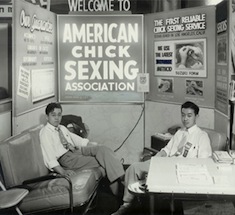 A dozen years ago, this New York Times Magazine story wormed its way into my memory banks by citing a single, jaw-dropping stat: “About 70 percent of all Indian motel owners—or a third of all motel owners in America:mdash;are called Patel, a surname that indicates they are members of a Gujarati Hindu subcaste.” After reading that tidbit on page one, how could I resist the urge to plow through the remaining 5,000 words?
A dozen years ago, this New York Times Magazine story wormed its way into my memory banks by citing a single, jaw-dropping stat: “About 70 percent of all Indian motel owners—or a third of all motel owners in America:mdash;are called Patel, a surname that indicates they are members of a Gujarati Hindu subcaste.” After reading that tidbit on page one, how could I resist the urge to plow through the remaining 5,000 words?
The main takeaway from the piece wasn’t just that Indians have come to dominate America’s mid-market hospitality industry, but that certain immigrant groups have long made their way on these shores by specializing in particular industries. As the story’s author explained:
America’s motels constitute what could be called a nonlinear ethnic niche: a certain ethnic group becomes entrenched in a clearly identifiable economic sector, working at jobs for which it has no evident cultural, geographical or even racial affinity.
I don’t mean Italians owning pizzerias, or Japanese people running judo schools. I mean, to use an obvious example, the Korean dominance of the deli-and-grocery sector in New York — a city where the Chinese run most laundries and Sri Lankans, in case you didn’t know this, run most porn-video stores. Or the Arabs in greater Detroit, who have a stranglehold on gas stations, or the Vietnamese who monopolize nail salons in Los Angeles. Farther afield, I could mention London’s taxi drivers, sharp-tongued in their big black cars, many of whom are Jews from the city’s East End; or the security guards outside New Delhi’s more affluent residences, virtually all of whom are Nepalese; or the prostitutes in the United Arab Emirates, who are so often women from Russia.
There is, of course, usually a prosaic reason why a group got involved in its preferred line of work. A perfect example of this is the way in which Japanese-Americans came to control the chick-sexing profession in the 1940s and ’50s.
This tale of economic triumph has a single hero: S. John Nitta, who founded the American Chick Sexing Association in 1938. During the war, when over 100,000 of his fellow Japanese-Americans were interned, Nitta continued to train and certify sexors; once the conflict ended, former internees turned to chick sexing as one of their few routes to economic advancement. Nitta was compelled to open up new training facilities, leaving behind his initial schools to be run by fellow Japanese-Americans. By the dawn of the Eisenhower Era, well over 90 percent of America’s chick sexers were of Japanese origin.
But Japanese-Americans lost this “nonlinear ethnic niche” quite quickly—partly because the next generation moved into more remunerative professions, but also because the advent of feather sexing opened up the enterprise to less skilled workers. But Nitta’s association is still with us, though it’s now down to two employees. I wonder if they still hand out these nifty certificates.


Captured Shadow // Feb 9, 2011 at 1:14 pm
I remember that article too. I recently read about Cambodians opening most of the LA doughnut shops. Fascinating stuff, and it makes you think maybe your career choices are more constrained than is commonly realized..
Sara Mayeux // Feb 9, 2011 at 3:18 pm
I once read that Tippi Hedren was somehow responsible for the Vietnamese nail salons. Now I forget exactly how.
Brendan I. Koerner // Feb 9, 2011 at 3:22 pm
@Sara Mayeux: Great memory–here’s an LAT piece about Ms. Hedren’s role from ’08:
http://articles.latimes.com/2008/may/05/local/me-nails5
Improbable Research » Blog Archive » American chicken-sexing update // Jun 1, 2013 at 12:03 am
[…] Brendan Koerner looks at the past and present of one nation’s chicken-sexing industry: […]